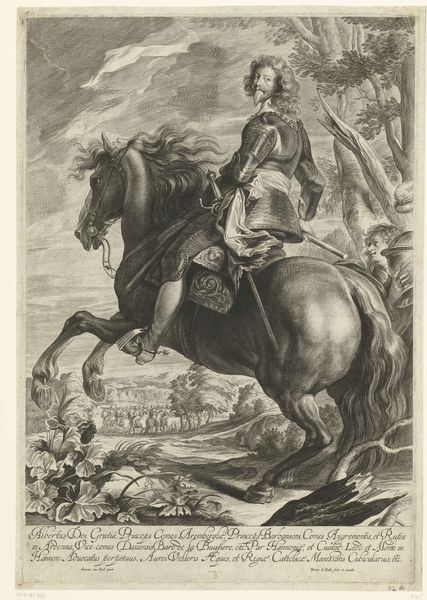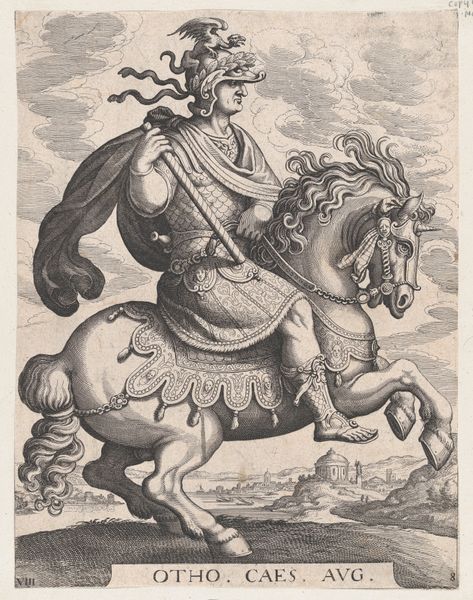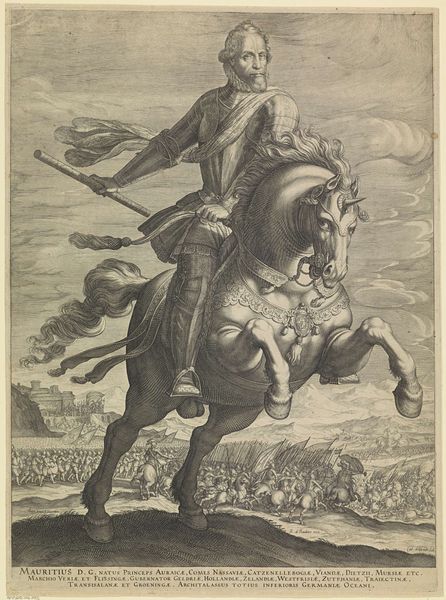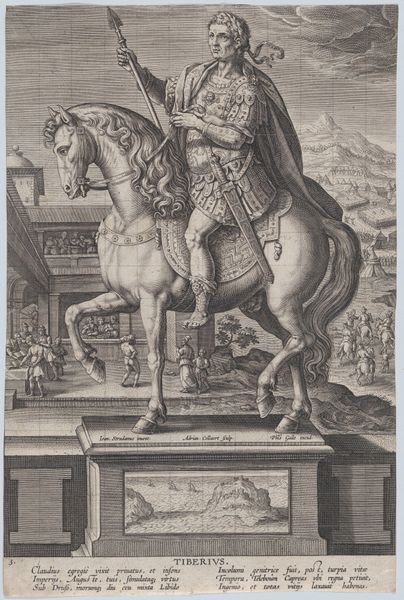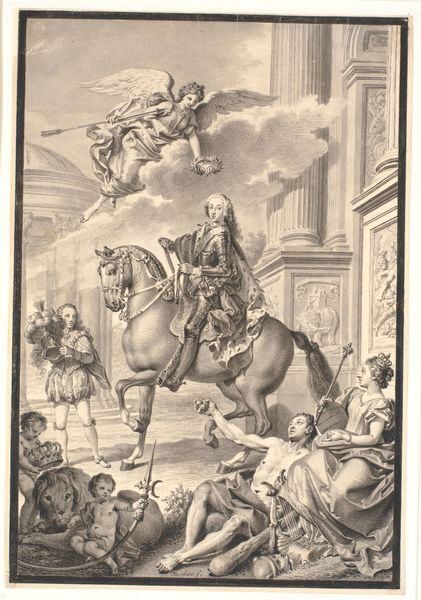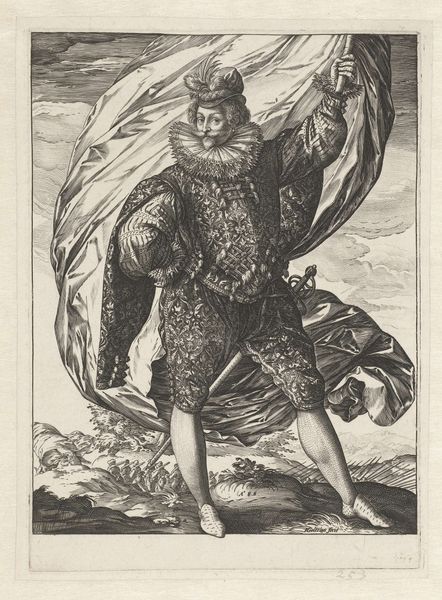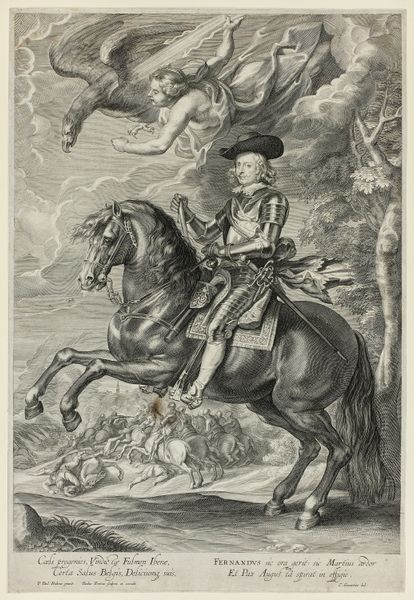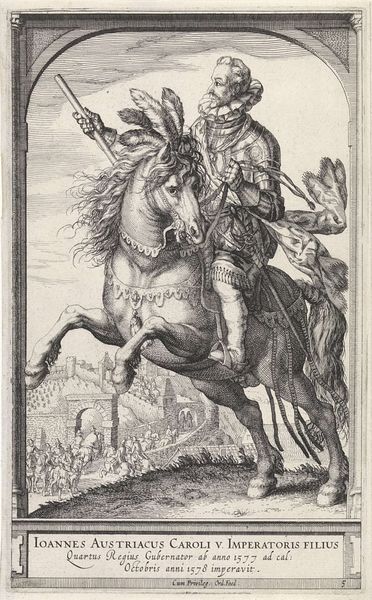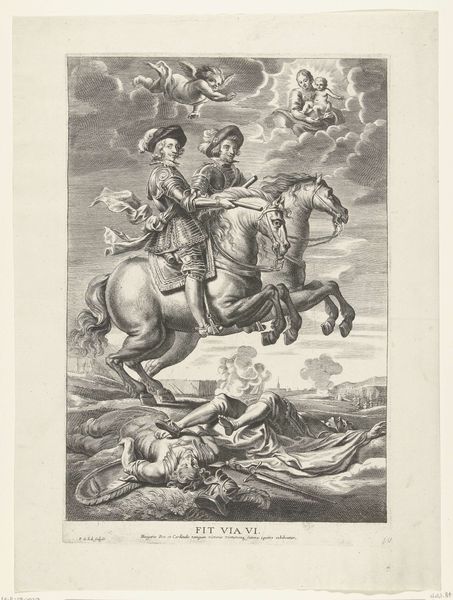
drawing, print, metal, engraving
#
portrait
#
pencil drawn
#
drawing
#
baroque
# print
#
metal
#
charcoal drawing
#
figuration
#
pencil drawing
#
cityscape
#
history-painting
#
engraving
Dimensions: height 561 mm, width 356 mm
Copyright: Rijks Museum: Open Domain
Curator: Here we see an engraving titled "Equestrian Portrait of Philip IV of Spain," dating from 1677 to 1730. Editor: Immediately, I’m struck by the ethereal quality of it, the way the gray metal contrasts with these sort of fantastical, heavenly beings swirling above him. The sheer density of imagery feels baroque but somehow subdued, a bit ghostly. Curator: That ghostly quality is interesting, considering the weight portraits like these carried. Equestrian portraits were a powerful tool, solidifying a ruler's image and authority. Here, however, we have something that questions traditional ideas of the "ruler" narrative. Editor: Precisely! I mean, what symbols jump out at you? We see Philip in armor, a typical representation of power and military might, yet surrounded by cherubs and swirling clouds. The horse rears, perhaps hinting at an underlying tension or the unsteady ground beneath his feet, given Spain’s declining influence during the latter part of his reign. The wreath in one of the cherubs hands signifies what, eternal glory or temporal dominion? Curator: And the children at the bottom offering him a helmet or chalice are reminders of what must be provided as tribute. Look closer though. Consider that printmaking allowed for wider circulation, reaching broader audiences beyond the immediate court. Does it then challenge and critique its subject? Or is it a more symbolic assertion, more about aspiration than actuality? The piece, in this context, exists as a symbol of control but feels like grasping sand. The engraving has taken on a more complicated significance, when we recall all this history. Editor: A valid point, but this ties into the inherent ambiguity of symbolic representation. I am just reminded of how the image speaks of more than a person but a representation. By examining the composition, lighting, and all of the context, we grasp what those figures surrounding him meant for the state of mind of a culture! Curator: I suppose that kind of tension is why this artwork resonates so strongly; it offers a potent statement, yes, but it also allows for a wider set of questions about the construction of authority. Editor: A very rewarding, intricate work of art!
Comments
No comments
Be the first to comment and join the conversation on the ultimate creative platform.
